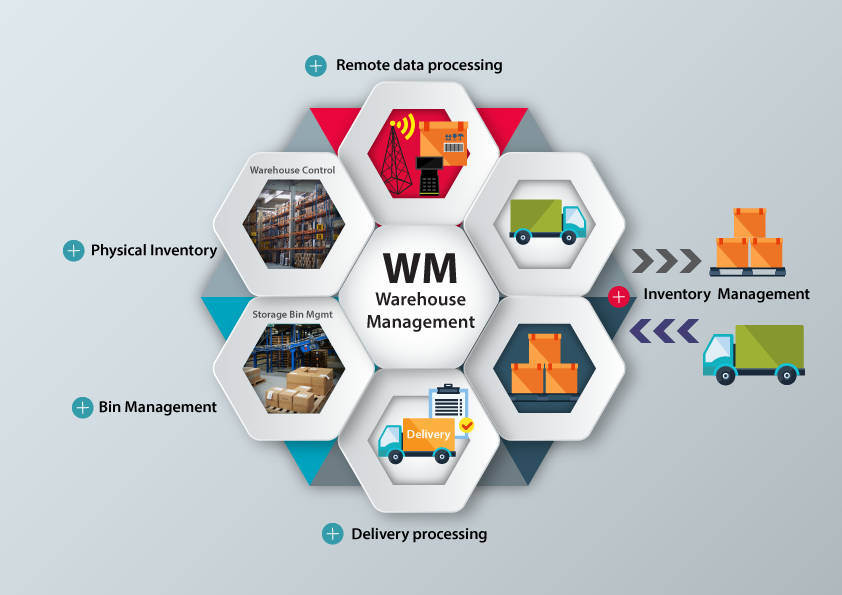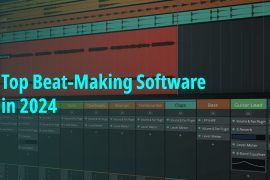On-Premise Data Integration software enables businesses to integrate data in diverse forms from various on-premise sources within a firm. On-premise data integration packages provide conventional interfaces to other on-premise software as well as data cleansing, monitoring, and transformation functionality. On-premise data integration software is provided as a stand-alone product that can be implemented locally or in a private cloud. Pre-built connections are often used to connect on-premise resources, and sellers of these solutions will update connectors as needed for new programs and data sources. Because on-premise data integration solutions serve as a communication hub for data passing between applications, they may be used with almost any on-premise category.

Table of Contents
Factors to consider while selecting On-Premise Data Integration
A product must meet the following criteria to be considered for inclusion in the On-Premise Data Integration category:
Using a locally installed network, synchronize company data and apps.
Allow users to use a centralized interface to retrieve and extract data.
To be able to manipulate data as it flows between applications, you’ll need tools or logic.
Choosing the best On-Premise Data Integration Software can often be a difficult task. But worry not, we are here to help. Given below is a list of the most suitable On-Premise Data Integration Software for businesses and individuals to help you decide on the best one for your needs.
Top 10 On-Premise Data Integration Software to Use
Oracle Warehouse Builder
Oracle Warehouse Builder is a single, all-encompassing tool for data integration. The Oracle Database is used by Warehouse Builder to turn data into high-quality information. It offers data quality, data auditing, fully integrated relational and dimensional modeling, and complete data and metadata lifecycle management. Create data warehouses, move data from legacy systems, consolidate data from diverse data sources, clean and transform data to give high-quality data, and manage corporate metadata with Warehouse Builder. Oracle Warehouse Builder is a set of graphical user interfaces that can help you develop data integration solutions. You generate many objects in the course of designing solutions, which are kept as metadata in a centralized repository known as a workspace. An Oracle Database serves as the workspace’s backend. You do not have full access to the workspace as a general user. You can instead use the workspaces to which you have been allowed access. Oracle Warehouse Builder is a versatile tool for designing and deploying various data integration techniques. Mission-critical operational systems, migration scenarios, integration of multiple operational systems, and classic data warehousing are all projects that Warehouse Builder is widely used for.
Oracle GoldenGate
Oracle Cloud Infrastructure (OCI) GoldenGate is a managed service that offers a real-time data mesh platform with replication for high availability and real-time analysis. Customers don’t have to allocate or manage compute environments to build, run, and monitor their data replication and stream data processing solutions. OCI GoldenGate is an Oracle Cloud Infrastructure managed service that allows users to create, execute, orchestrate, and monitor their data replication and stream data processing solutions. Oracle GoldenGate allows you to do the following:
-For increased business understanding, real-time business information and stream analytics are available.
-To improve OLTP performance, query offloading is used.
-For continuous availability, zero-downtime data migration, disaster recovery, and active-active database synchronization are all available.
High availability solutions, real-time data integration, transactional change data capture, data replication, transformations, and verification between operational and analytical business systems are all possible with this Oracle product set.
Oracle Data Integrator
Oracle Data Integrator is a unified platform that allows enterprises to establish data warehousing systems, improve migration and interoperability, manage releases, and more. Its built-in interface with technologies like Spark, HDFS, Hive, and others helps employees to handle ELT procedures for large data. Oracle Data Integrator allows team members to handle Apache Subversion integration to manage codes and development, testing, and production environments, resulting in improved release management processes. It allows employees to migrate and synchronize historical data from old to new systems. Oracle Data Integrator allows you to do the following:
o Heterogeneous platform support for business data integration
o Knowledge modules for increased developer productivity and extensibility
o Service-oriented data integration and management for SOA settings
o ELT architecture for improved performance and lower TCO
Oracle Data Integrator Cloud Service offers pushdown data processing, which combines high-performance ETL with little data movement, making it ideal for the cloud. Oracle Data Integrator Cloud Service performs data transformations on the fly, eliminating the need to copy data to remote sites.
IBM InfoSphere Information
IBM InfoSphere Information Server is a prominent data integration technology that makes understanding, cleansing, monitoring, and transforming data easier. The solutions offer scalable and adaptable massively parallel processing (MPP) capabilities. Using hyper-converged systems like IBM Cloud Pak® for Data, deliver trusted data to important business initiatives on-premises, in private, public, or hybrid cloud environments. With this extract, transform, load (ETL) platform, IBM InfoSphere provides quick, flexible data integration that can be deployed on-premises or in the cloud. It employs a standardized strategy to discover your IT assets and build a common business language for your data. Improve integration with related products while getting a greater grasp of current data assets and integrate rules analysis on a scalable heterogeneous data platform to improve insights from your enterprise data.
SharePlex
SharePlex is a high-availability, scalability, and reporting database replication software. You can replicate Oracle data with SharePlex® for a fraction of the cost of native technologies. With this adaptable solution that supports numerous business use cases, you can easily establish high availability, boost scalability, integrate data, and outsource reporting. With inexpensive replication, you can move your data, not your wallet. Maintain an accurate, real-time copy of production data using SharePlex to safely upgrade and migrate databases. Until the testing is over, keep the source and target in sync. Enhance disaster recovery and achieve high availability. Switch users to a backup system during maintenance to keep production data accessible 24 hours a day, seven days a week. To satisfy business needs, replicate and integrate data in near real time while assuring data accuracy in flight. Improve database speed by offloading reporting and implementing load balancing while also streamlining your reporting environment and improving OLTP performance.
ODBC driver for Oracle
Devart ODBC Driver for Oracle is an enterprise-level connectivity solution for accessing Oracle databases through ODBC-compliant reporting, analytics, BI, and ETL tools on both 32-bit and 64-bit Windows, macOS, and Linux. The ODBC driver supports all common ODBC API functions and data types, making it simple and secure to access live Oracle data from anywhere. Our data connector allows ODBC-aware programs to connect directly to Oracle over TCP/IP, eliminating the requirement for Oracle Client. The speed of data transmission between an external application and Oracle is increased with a direct connection, which is critical for real-time data processing. It also simplifies the deployment process because no additional client software is required to be distributed with the driver. The Oracle client library can also be used to connect to Oracle.
SSIS Data Flow Components
SQL Server Integration Services allows you to integrate database and cloud data with Devart SSIS Data Flow Components (SSIS). Using the SSIS ETL engine, Devart SSIS Data Flow Components make it simple to set up cost-effective data integration. It enables fast data loading, easy component editing, SQL support for cloud data sources, and other data source-specific features. Devart has a loyal following of over 40 000 clients. They sell to well-known multinational corporations, as well as private individuals, government agencies, and educational institutions. Improvement, high-quality user assistance, and adaptable development are the pillars of our work philosophy. Using the SSIS ETL engine, Devart SSIS Data Flow Components make it simple to set up cost-effective data integration. They offer fast data loading, simple component editors, SQL support for cloud data sources, and a variety of data source-specific capabilities.
TMate SubGit
SubGit is a Git client that has to be installed on your Git server. It identifies your remote SVN repository’s settings, downloads, and transforms SVN revisions to Git commits. SubGit maintains synchronization between the two repositories. SubGit translates and delivers new commits to SVN every time a user pushes a new commit to Git. It also downloads new versions from SVN as soon as they are available. Users of SVN and Git can see each other’s commits as if they were all on the same machine. SubGit protects the mirror’s integrity by preventing potential conflicts between the systems. SubGit is an SVN client that does not interfere with your current workflow or infrastructure. SubGit can manage any SVN history, no matter how large or complicated. TMate SubGit is a tool for SVN to Git migration teams. It transforms SVN repositories to Git, allowing you to use both systems at the same time.
Data Virtuality Platform
The Data Virtuality Platform is the only platform that combines data virtualization and data replication, giving data teams the freedom to choose the best solution for each situation. A single tool, it combines high-performance real-time data integration with master data management via enhanced ETL and improved query optimization and data historization. By delivering self-service capabilities and data governance elements that are essential for modern data architectures like Data Fabric and Data Mesh, the Data Virtuality Platform is an enabler for these frameworks. Data virtualization makes it simple to connect, deliver, and retrieve data without requiring a high level of technical expertise. Data can be edited, combined, and calculated regardless of the format or physical location of its source. As a result, the time to the solution can be dramatically reduced (by up to 5 times). Rapid prototyping can be used to test new concepts, providing more flexibility and allowing for shorter test cycles before moving to production environments.
ZigiOps
ZigiOps is the most adaptable data integration platform on the market. All System Administrators and IT Operations specialists can connect their systems with only a few clicks using this service. ZigiOps is an integration tool that doesn’t require any coding. It’s designed for users that wish to quickly and easily set up and activate their integrations from the UI. ZigiOps is designed specifically for businesses. It simplifies integrations while also allowing users to synchronize all fields from other systems thanks to its advanced features. The system is simple to use, connects to both on-premise and cloud deployments, and does not keep any of the data that is sent. The integration platform from ZigiOps is a stand-alone product. A connector, such as ZigiOps, is a self-contained component set of APIs that allows for numerous integrations via a universal broker and external application APIs. ZigiOps provides a far more user-friendly interface than a plugin and enables both uni- and bi-directional system integrations.
In the event of an outage, ZigiOps provides high availability, and there is always a backup server ready to start up where the previous one left off.
Conclusion
Ensuring your on-premise data integration software solution corresponds with your company’s goals is an important part of the process. There are several excellent data integration technologies available, each focusing on a certain use case or market niche. However, just because a set of capabilities is effective for one company does not indicate it will be effective for another. The first step in the vendor selection process is to find vendors who specialize in items for your environment. This assures a perfect fit and a great start for future deployments.






